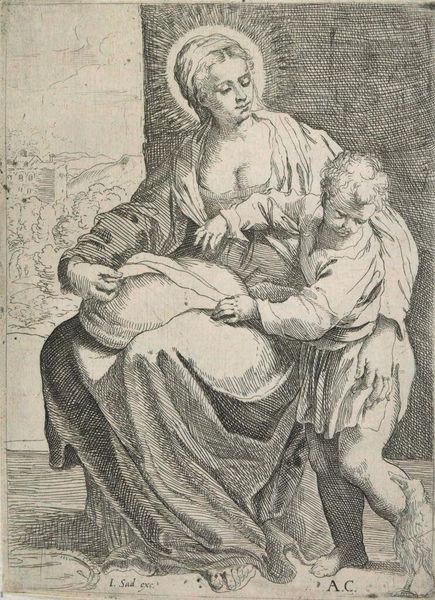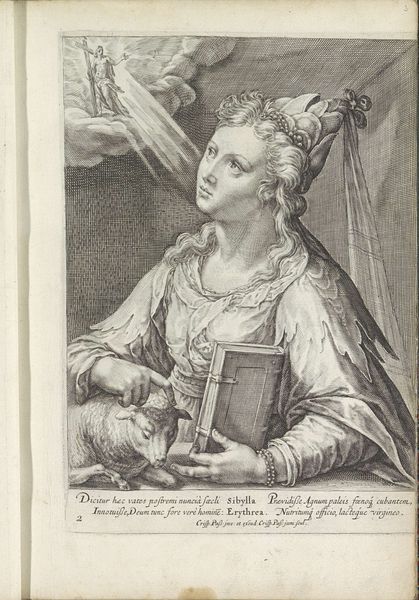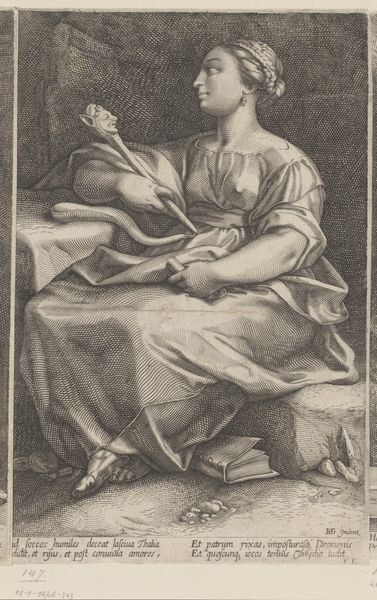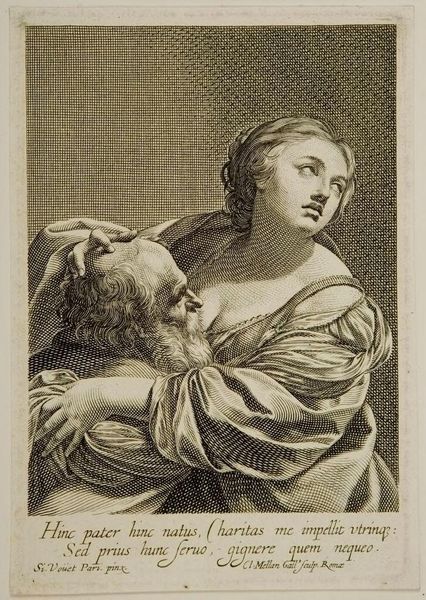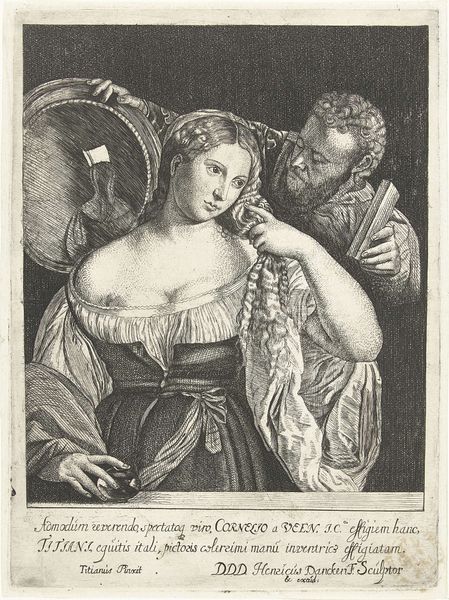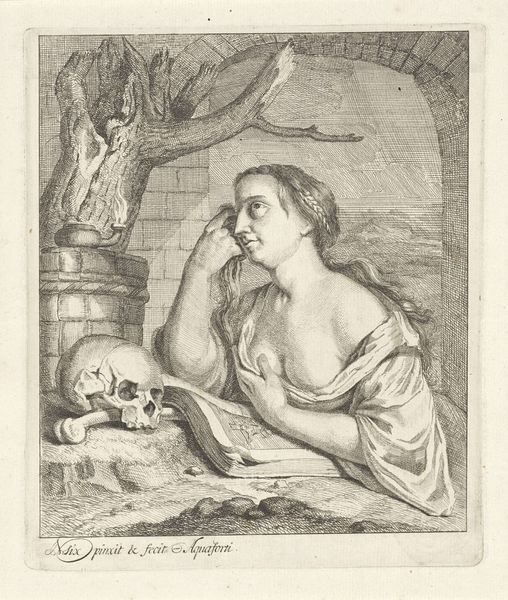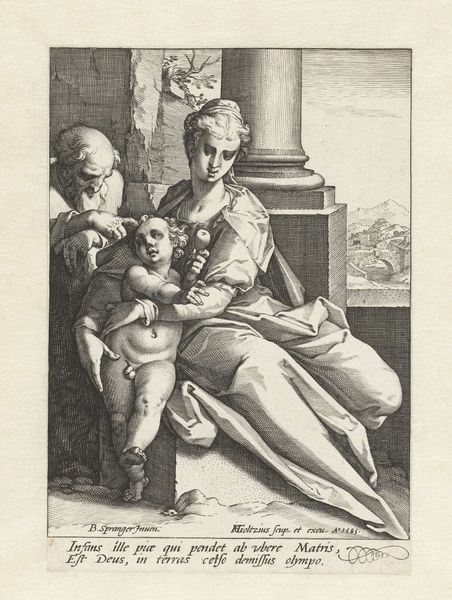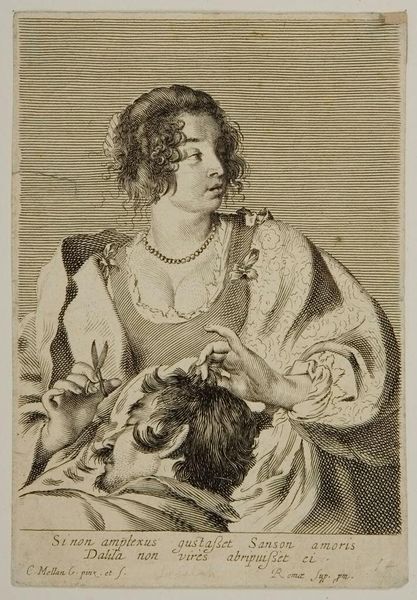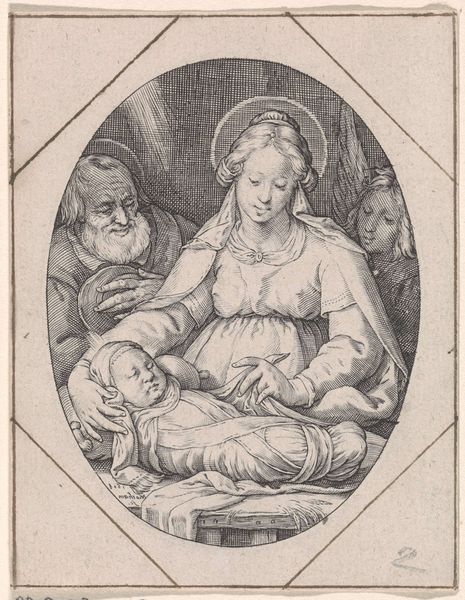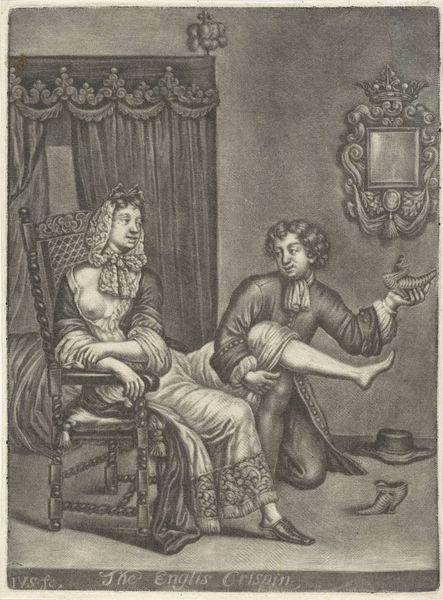
engraving
#
portrait
#
narrative-art
#
baroque
#
caricature
#
portrait drawing
#
history-painting
#
engraving
Dimensions: height 105 mm, width 78 mm
Copyright: Rijks Museum: Open Domain
Editor: Here we have Matthijs Pool’s "Bas-reliëf met Judit" from 1727, an engraving held at the Rijksmuseum. There’s something almost serene about Judith’s expression despite the… charged subject matter. How do you interpret this work? Curator: Well, consider the enduring power of Judith herself. Over centuries, her image shifts from pious heroine to avenging fury, a potent symbol used and re-used to reflect a culture's anxieties and aspirations. In this Baroque depiction, what symbols seem most pronounced to you? Editor: I guess it’s her gaze, averted, almost… vacant? And the way she cradles Holofernes' head, like a sleeping child almost, rather than a trophy. It's unnerving. Curator: Precisely! Note how Pool uses Judith’s pose to create an intimate yet unsettling image. The pearl necklaces she wears represent purity, a subtle reminder that she did what she had to do for her people. See the juxtaposition of tenderness and violence in this engraving? It creates a psychological complexity that transcends a simple narrative of victory. Editor: So it's not just about the story, but about the feelings and the changing meanings attached to it? Curator: Absolutely. These symbols gain meaning over time and in response to ever-shifting cultural values. Every culture re-interprets its origin stories and adapts them to its particular psychological needs. In understanding the iconographic shift of images such as this, we glimpse what we choose to remember. Editor: That’s a really powerful point, I never thought about it like that. Thanks so much! Curator: My pleasure! Thinking about how images shape our understanding of history is incredibly valuable.
Comments
No comments
Be the first to comment and join the conversation on the ultimate creative platform.
